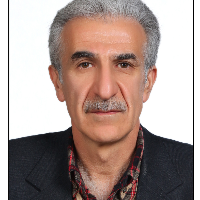Effect of Nitrogen Supply Sources on Wheat (Triticum aestivum L.) Quality and Quantity Yield
In the last few decades, one of the important problems in agriculture is the high cost of fertilizers in plant production and their dispersion in the field, which gives rise to soil and water pollution; moreover, their extensive use is believed to contribute to global warming through emissions of nitrous oxide. Therefore, in modern agriculture, which aims to reduce the input of fertilizers and improve grain quality without affecting yield.Cereal-legume intercropping system has been a common cropping system in arid and semi-arid areas such as Afghanistan.Another way to reduce the application of chemical fertilizers to improve biological activity and increase soil fertility, increase crop yield and ultimately achieve stability in agricultural systems, is the use of organic fertilizers including livestock manure. Afghanistan's soils are deficient in organic matter, and there are various management approaches to soil nitrogen supply, such as application of chemical fertilizers, manure, and intercropping. Thus, the aim of this study was to investigate the effect of nitrogen supply sources on quantitative and qualitative yield of wheat cultivars in Herat province of Afghanistan.
In order to determine the effect of nitrogen supply sources on different wheat varieties, an experiment was conducted in agriculture faculty research farm of Herat University-Afghanistan in 2018-19. The experiment was set up on split plot in randomized complete block design with three replications. The main plot factor was three different levels of nitrogen supply sources (mix cropping clover & wheat, N application (100 kg.ha-1 Urea), 40 ton.ha-1 manure application) and ten wheat varieties that are being cultivated in Herat were considered as subplot factors.After harvesting, plant samples were placed in oven at 65 °C for 48 hours and various parameters (total dry matter, yield and yield components, protein percentage, content of seed K & P) were measured in laboratory for each plot. The analysis of variance (ANOVA) was performed by using GLM proc. in SAS version 9.1 and the lest significant different test (LSD) was used for mean comparison.
Results showed that the effect of nitrogen supply sources on all wheat quality and quantity yield components, except on spike length, number of spikelet per spike and the amount of seed P and K, were significant. However the effect of variety, except on stem and leaf weight, and the amount of seed P and K in all measured parameters were significant. In addition, the interaction of nitrogen supply sources and varieties on spike length and weight, 1000 seed weight, seed yield and seed protein were significant. The highest amounts of all measured characteristics were obtained in chemical fertilizer application. But the difference between chemical fertilizer application and clover mix cropping on number of spikelet per spike, stem & leaf weight and total dry matter (TDM) were not significant.In addition, results showed that the measured traits varied in different varieties. The highest plant height was obtained in Gul-96 variety, but the Mazar-99 variety, Kabul-13 variety and Gul-96 variety were the same in producing TDM. While the Kabul-13 variety was produced the most spikes weight, seed per spike, seed yield, harvest index and highest protein yield. But the Baghlan-09 variety had the highest 1000 seed weight.
Results showed that different sources of nitrogen supply had a positive effect on the quantitative and qualitative yield of wheat. Also, different wheat varieties had reacted differently to nitrogen sources. The highest grain yield was produced by Kabul 13 wheat cultivar with 100 kg urea per hectare application, but no significant difference was observed between grain yield with urea fertilizer application and wheat clover mixed cropping system. In addition, there was no significant difference between the grain protein percentages on treatments with urea fertilizer application with wheat clover mix cropping. As a result, it is inferred that cultivation of Kabul 13 wheat variety in mixed with clover in a sustainable low-input agricultural system in Herat province of Afghanistan, like urea fertilizer application, will be able to increase the quantitative and qualitative yield of wheat as an offer the option to farmers.
- حق عضویت دریافتی صرف حمایت از نشریات عضو و نگهداری، تکمیل و توسعه مگیران میشود.
- پرداخت حق اشتراک و دانلود مقالات اجازه بازنشر آن در سایر رسانههای چاپی و دیجیتال را به کاربر نمیدهد.




